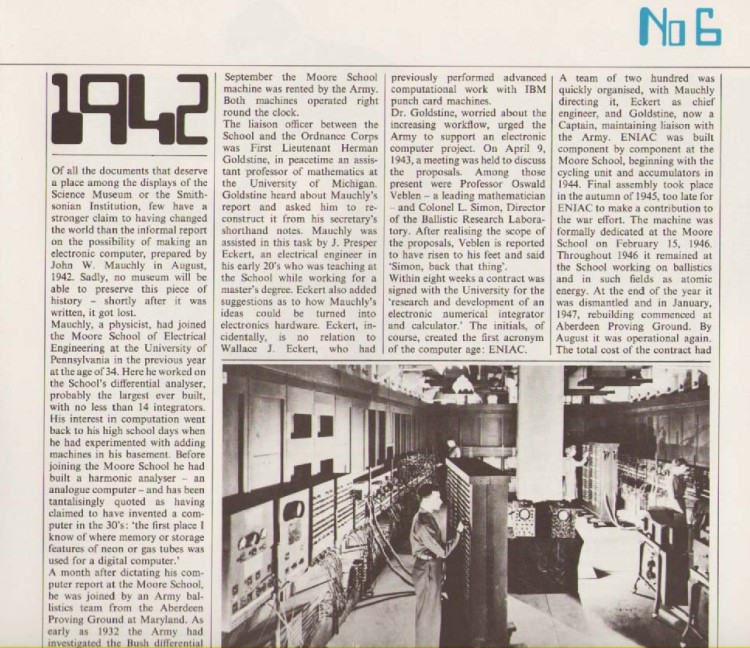|
This 3M The Birth Of The Computer No 6 - 1942 4 page large format document was produced by 3M.
The focus is on The focus is on John W Mauchly (August 30, 1907 – January 8, 1980) who was an American physicist along with J. Presper Eckert, designed ENIAC, the first general purpose electronic digital computer, as well as EDVAC, BINAC and UNIVAC I, the first commercial computer made in the United States.
Together they started the first computer company, the Eckert-Mauchly Computer Corporation (EMCC), and pioneered fundamental computer concepts including the stored program, subroutines, and programming languages. Their work, as exposed in the widely read First Draft of a Report on the EDVAC (1945) and as taught in the Moore School Lectures (1946) influenced an explosion of computer development in the late 1940s all over the world.
In 1942 Mauchly wrote a memo proposing the building of a general-purpose electronic computer. The proposal, which circulated within the Moore School (but the significance of which was not immediately recognized), emphasized the enormous speed advantage that could be gained by using digital electronics with no moving parts. Lieutenant Herman Goldstine, who was the liaison between the United States Army and Moore School, picked up on the idea and asked Mauchly to write a formal proposal. In April 1943, the Army contracted with the Moore School to build the Electronic Numerical Integrator and Computer (ENIAC). Mauchly led the conceptual design while Eckert led the hardware engineering on ENIAC. A number of other talented engineers contributed to the top secret project "PX".
Because of its high-speed calculations, ENIAC could solve problems that were previously unsolvable. It was roughly a thousand times faster than the existing technology. It could add 5,000 numbers or do 357 10-digit multiplications in one second.
ENIAC could be programmed to perform sequences and loops of addition, subtraction, multiplication, division, square-root, input/output functions, and conditional branches. Programming was initially accomplished with patch cords and switches, and reprogramming took days. It was redesigned in 1948 to allow the use of stored programs with some loss in speed.
DR Maurice Wilkes, Alan M Turing, English Electric DEUCE and the IBM 701 are also featured
This were kindly donated in the memory of the late Roy Pemberton who had previously owned them
Date : January 1972
Creator : 3M
This exhibit has a reference ID of CH11687. Please quote this reference ID in any communication with the Centre for Computing History.
|
|
 Click on the Image For Detail
Click on the Image For Detail
|










